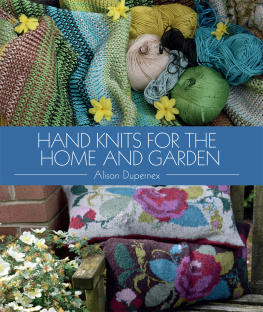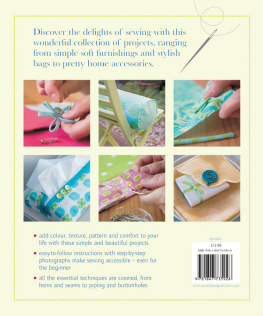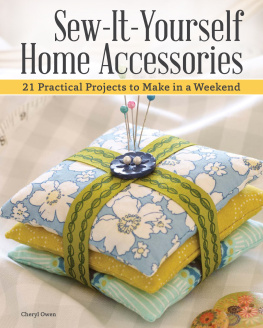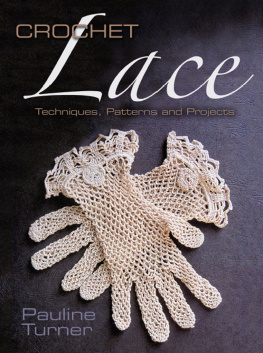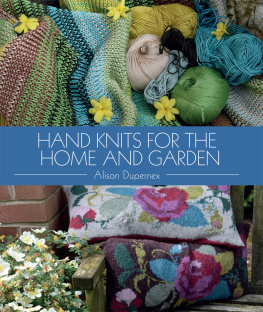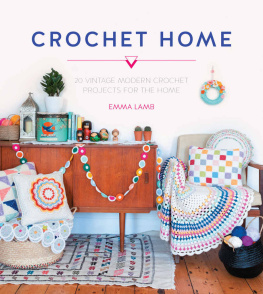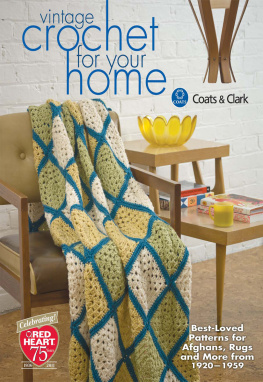HAND KNITS FOR THE
HOME AND GARDEN
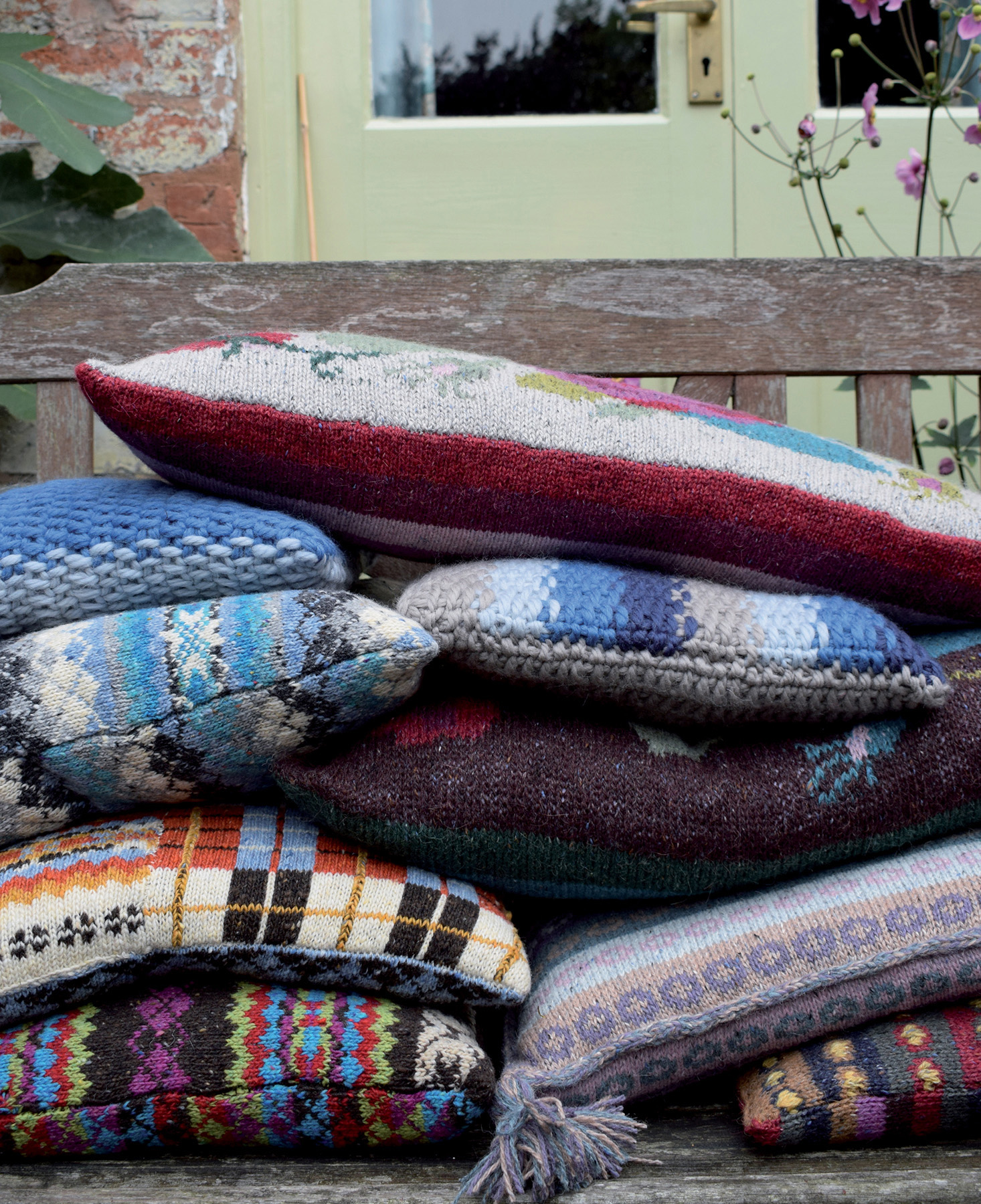
HAND KNITS FOR THE
HOME AND GARDEN
Alison Dupernex

THE CROWOOD PRESS
First published in 2018 by
The Crowood Press Ltd
Ramsbury, Marlborough
Wiltshire SN8 2HR
www.crowood.com
This e-book first published in 2018
Alison Dupernex 2018
All rights reserved. This e-book is copyright material and must not be copied, reproduced, transferred, distributed, leased, licensed or publicly performed or used in any way except as specifically permitted in writing by the publishers, as allowed under the terms and conditions under which it was purchased or as strictly permitted by applicable copyright law. Any unauthorised distribution or use of thistext may be a direct infringement of the authors and publishers rights, and those responsible may be liable in law accordingly.
British Library Cataloguing-in-Publication Data
A catalogue record for this book is available from the British Library.
ISBN 978 1 78500 456 8
CONTENTS
Acknowledgements
Grateful thanks are due to Rowan Yarns for keeping up with my demands for yarn. I thank Knoll Yarns for sponsoring the Aran-patchwork blanket and Chris Birch for help with the knitting. Also, thank you to Sharon McSwiney, jeweller and metal worker, and Gilly, from Yew Tree Gallery, who allowed me to use their gardens, in sunny Cornwall, to photograph some throws. Huge thanks to Simon for reading and making sense of the hieroglyphs. I have had some wonderful support.
INTRODUCTION
It is a very human characteristic to want to create something, and the act of creation in turn is hugely satisfying.
This book is to be used as a catalyst for your ideas. There are patterns, but the hope is that you will be inspired to adapt these or make up your own, gaining in confidence and knowledge. Colour is talked about at great length, as it is the use of colour that raises a great deal of work above the ordinary.
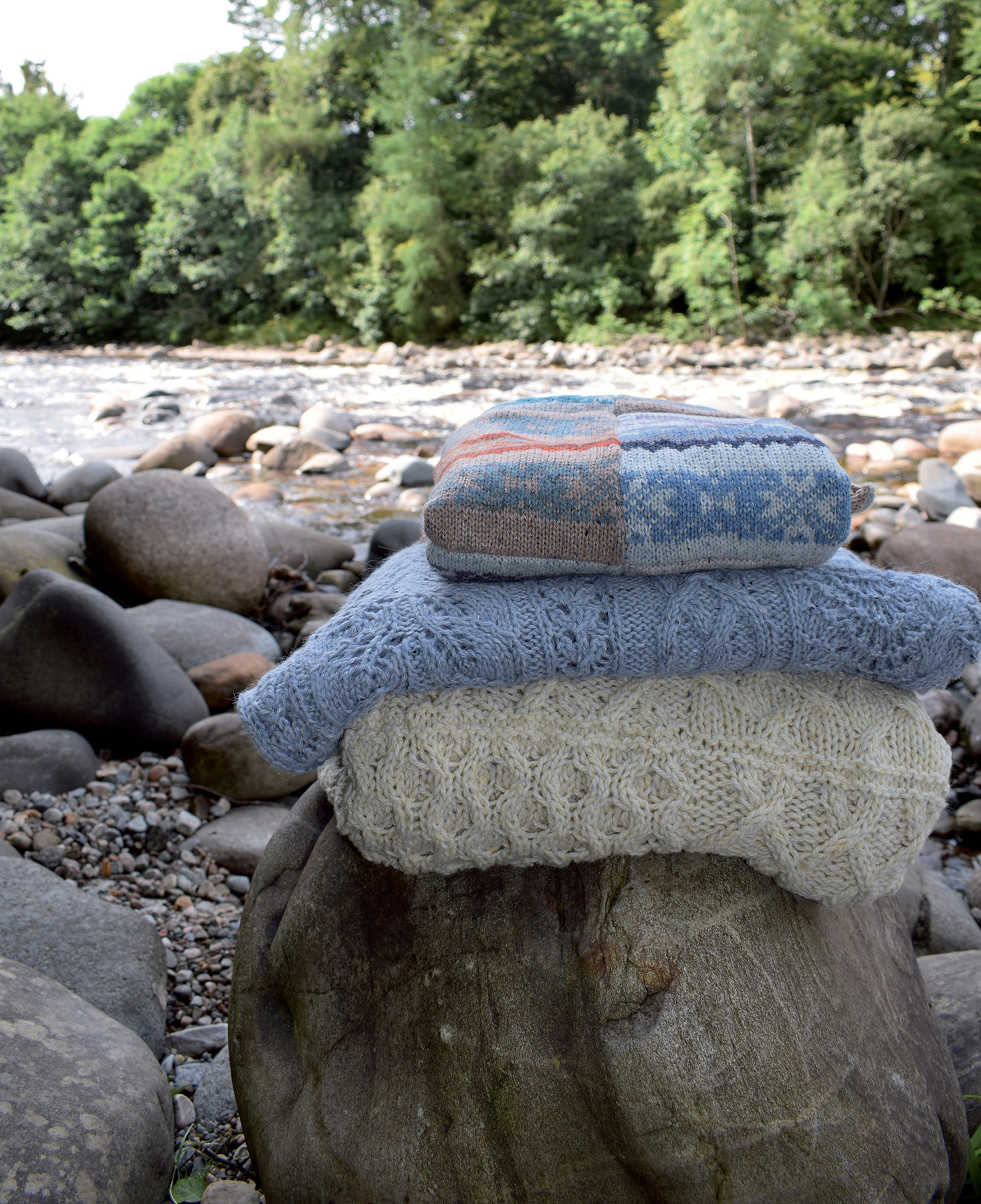
Textured and Fair Isle blankets.
The joy of making some furnishings is that you do not have to get too hung up on sizing and gauge/tension. For many of the projects, such as blankets, throws and runners, it really is not important if the finished result is a few centimetres larger or smaller than the sample. However, accurate sizing is important when making a box covering or a cushion cover, because exact dimensions are required for these items to be functional.
Head, heart and hand
These three aspects are the basis on which all design is created.
Your head asks logical questions. What colours should I use? What is my project? What stitch pattern should I use? What are the likely problems that I may encounter? How will I solve them? This also covers the practical side of the design and how it will be worked.
Your heart triggers emotions and feelings, leading to further design questions. Why should I use a certain colour? Can I not experiment and take a risk? Is my experiment successful? How tactile is my project: is it smooth and soft or bobbly and crunchy? Which options will work best for my design?
Your hand is how you can obtain the results required, by the execution of the project. Your hands are the tools for the job, and what wonderful tools!
You are standing on the shoulders of giants, and many well-known knitters have explored and developed the techniques that you will use as a keystone for further creative development.
The history of humankind has been and still is a violent one; yet, while one section of humanity is prepared to behave in utterly inhuman ways, there is another that has quietly continued to develop their practice and build on their skills as creative makers. Your philosophy of making feeds a calm, meditative core, which is hugely satisfying, and this philosophy will run through your veins like a life blood and help to make the world a more civilized and contemplative place.
In recent years, there has been a resurgence in the practice of hand knitting, and there are many reasons to explain why. The hectic pace of life requires moments of calm, and knitting, being portable and requiring just two sticks and some wool, is an ideal way of achieving this. Knitting is versatile and, when it is being performed, a calming rhythm is built up. There are no boundaries, and a pattern can be followed closely, stitch by stitch, or the maker can take flight and add stitches and change colours. Your confidence grows, and you will invent new techniques.
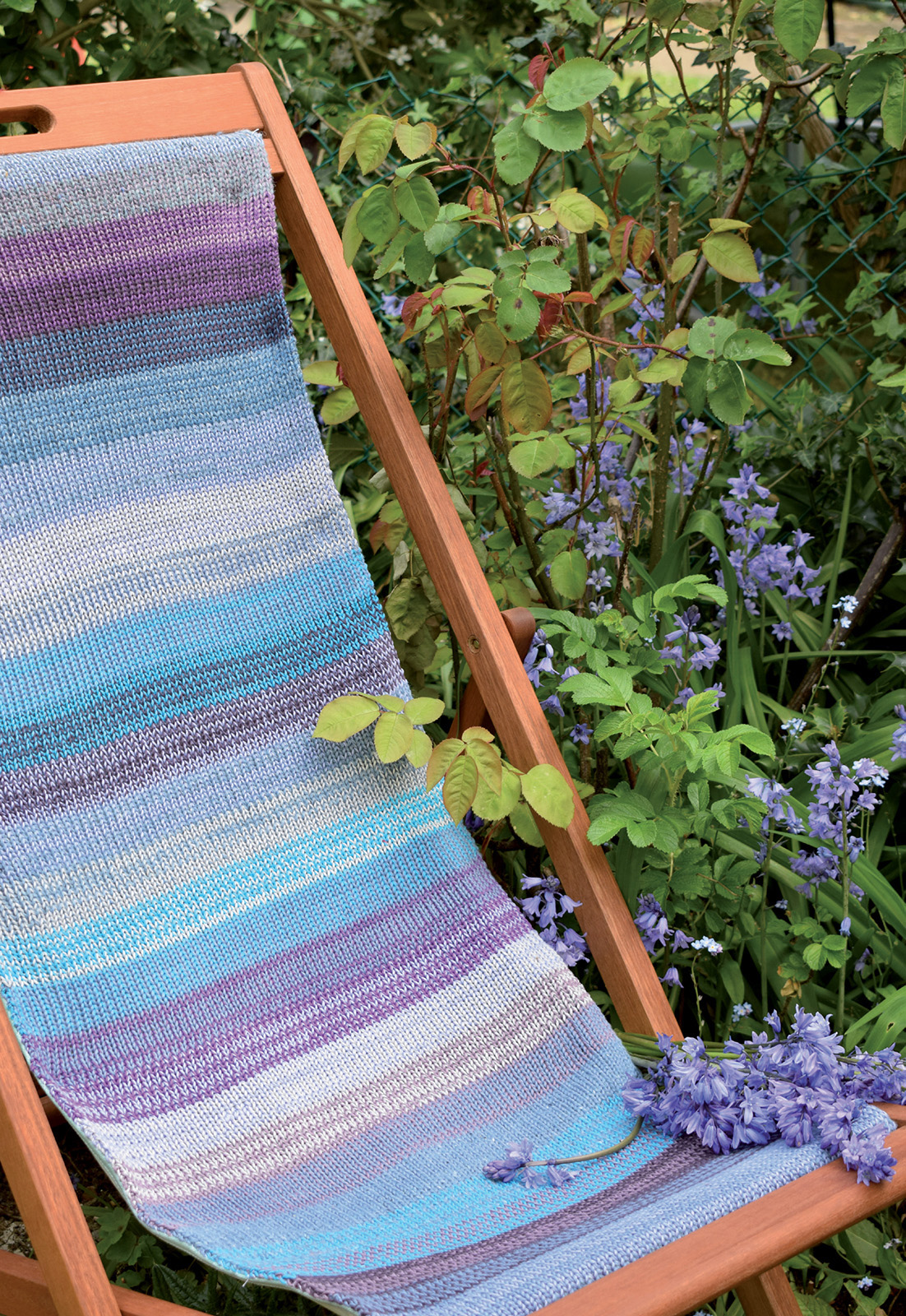
Seascape deckchair cover.
Even with the finest yarn, it is the quality of your design and technique that will make a work of beauty. Do not be anxious or reluctant to unpick your mistakes and start again, because this is all part of the learning process and will pay dividends in terms of your completed design. Some mistakes can be happy accidents, but not all, so do not be afraid to experiment!
Bring your knitting to life by always considering how it can be made better, and experiment with innovative details, because this will extend your skills.
With the head, heart and hand all employed, knitting really does become a therapeutic and creative experience; many knitters have known this for generations, but for others it is a new understanding.
A short history of knitting
The true history of knitting is lost in the mists of time, but there are early examples from the Near East. Fragments of knitted textiles, socks, to be precise, have been found in Egyptian tombs, and these were knitted in the round and feature two colours of yarn. They have been dated between 1200BC and 1500BC and show that the knitters of that time were making practical items and designing their own stitch patterns, echoing intricate woven-carpet borders.
Rare examples have also been found in Spanish tombs, dating from the thirteenth century: they are exceptionally finely worked, with intricate two-colour patterns showing a strong Arabic influence, and a gauge/tension of twenty stitches per 2.5cm (1in). Many of the early examples have survived because they were made for occasional liturgical use.
Historically, knitting was a male craft. During the European Middle Ages, a knitters apprenticeship was served over three years, and another three years of travel was undertaken to explore and learn new patterns and techniques. The degree of refinement attained was exceptional, and, to become an accredited knitter and join a guild, which was essential to gain work, an exam had to be passed. A number of original masterpieces had to be designed and knitted in a short time: a felted cap, a pair of stockings or gloves with a decorative pattern, a shirt or waistcoat, and a carpet or hanging of 183cm 152cm (6ft 5ft), to show off the skill of patterning flora and fauna. The mind-boggling intricacy required indicates that these items may have been made on a knitting frame. Only when this process was completed and passed did the knitter become a master. The intricate and exquisite garments were worn by members of the nobility, and each had his own favourite master.
There is evidence from England to suggest that complex knitted caps were made in Coventry during the thirteenth century, such as the Monmouth cap: this was worked with stocking stitch being knitted with four needles, and the rough, coarse wool was then felted. This style of cap was still being made in the nineteenth century for soldiers engaged in the Crimean War. The makers of these garments were called Cappers and worked full-time for the production of these caps.
Next page
